Themed collection Sustainable Laboratories

Chemistry must respond to the crisis of transgression of planetary boundaries
Chemistry, the science of transformation of matter, is fundamental to achieving sustainability through ensuring biogeochemical flows do not transgress planetary boundaries. This requires urgent changes in chemistry education, research and industry.
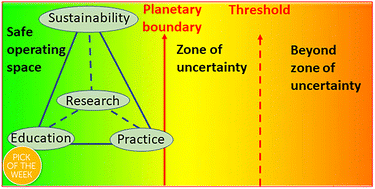
Chem. Sci., 2022,13, 11710-11720
https://doi.org/10.1039/D2SC03603G
Engineering a sustainable future for point-of-care diagnostics and single-use microfluidic devices
Single-use, disposable, point-of-care diagnostic devices carry great promise for global health, but present some challenges in terms of environmental sustainability. This perspective covers solutions to embed sustainability at the R&D and product development stages.
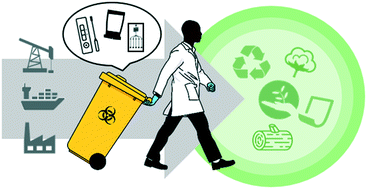
Lab Chip, 2022,22, 3122-3137
https://doi.org/10.1039/D2LC00380E
A case study in green chemistry: the reduction of hazardous solvents in an industrial R&D environment
A two-year collective effort towards the reduction by 50% of the usage of 7 hazardous solvents (Green Chemistry Principle #5) within a large-scale industrial R&D organization.

Green Chem., 2022,24, 3943-3956
https://doi.org/10.1039/D2GC00698G
Recent advances in continuous-flow organocatalysis for process intensification
The progresses on continuous-flow organocatalysis from 2016 to early 2020 are reviewed with focus on transition from batch to flow.
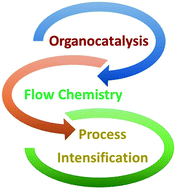
React. Chem. Eng., 2020,5, 1017-1052
https://doi.org/10.1039/D0RE00076K
Towards 4th industrial revolution efficient and sustainable continuous flow manufacturing of active pharmaceutical ingredients
The convergence of end-to-end continuous flow synthesis with downstream processing, process analytical technology (PAT), artificial intelligence (AI), machine learning and automation in ensuring improved accessibility of quality medicines on demand.

React. Chem. Eng., 2022,7, 214-244
https://doi.org/10.1039/D1RE00483B
Techno-economic assessment and carbon footprint of processes for the large-scale production of oxymethylene dimethyl ethers from carbon dioxide and hydrogen
Standardized process simulation approach for techno-economic and carbon footprint evaluation of large scale oxymethylene ether production accounting for the complexity of the reactive formaldehyde containing system.
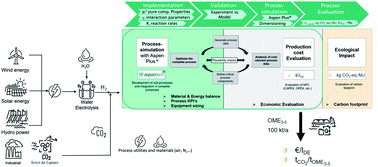
Sustainable Energy Fuels, 2022,6, 528-549
https://doi.org/10.1039/D1SE01270C
From circular synthesis to material manufacturing: advances, challenges, and future steps for using flow chemistry in novel application area
We review the emerging use of flow technologies for circular chemistry and material manufacturing, highlighting advances, challenges, and future directions.
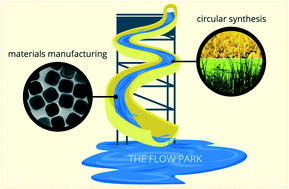
React. Chem. Eng., 2021,6, 756-786
https://doi.org/10.1039/D0RE00411A
Deep eutectic solvents: alternative reaction media for organic oxidation reactions
Deep eutectic solvents (DESs) are a valid alternative to common organic solvents and ionic liquids (ILs) as solvent media for organic oxidation reactions.
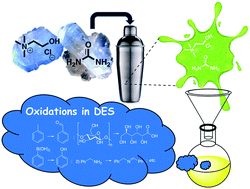
React. Chem. Eng., 2021,6, 582-598
https://doi.org/10.1039/D0RE00458H
Are lignin-derived monomers and polymers truly sustainable? An in-depth green metrics calculations approach
The green aspects of the lignin-derived monomers and polymers have been analysed. A different viewpoint has been provided to encourage researchers to use simple and yet effective green metrics calculations in the development of sustainable syntheses.
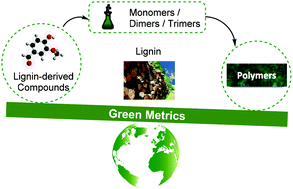
Green Chem., 2021,23, 1495-1535
https://doi.org/10.1039/D0GC03982A
Biorefinery roadmap based on catalytic production and upgrading 5-hydroxymethylfurfural
This review presents a comprehensive roadmap for the production of HMF from biomass and the upgradation of HMF toward fuels, chemicals and materials.
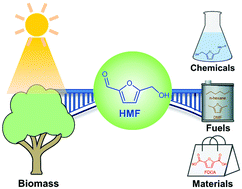
Green Chem., 2021,23, 119-231
https://doi.org/10.1039/D0GC02770G
Replacement strategies for non-green dipolar aprotic solvents
Despite their wide use in many fields, common dipolar aprotic solvents are urged to be replaced because of their detrimental effects on health and environment. Therefore, green replacement strategies in synthesis have been summarized.
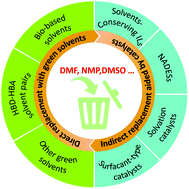
Green Chem., 2020,22, 6240-6257
https://doi.org/10.1039/D0GC02149K
Techno-economic analysis and life cycle assessment of a biorefinery utilizing reductive catalytic fractionation
Analysis of a promising lignin-first biorefining technique, reductive catalytic fractionation, provides useful metrics for cost and sustainability to guide researchers toward critical areas for improvement.
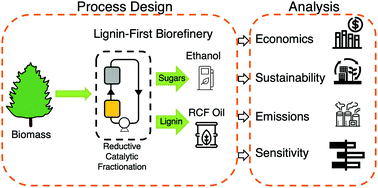
Energy Environ. Sci., 2021,14, 4147-4168
https://doi.org/10.1039/D1EE01642C
Life cycle analysis and sustainability comparison of reversed phase high performance liquid chromatography and carbon dioxide-containing chromatography of small molecule pharmaceuticals
Life cycle analysis allows comparison of RP-HPLC to SFC.

Green Chem., 2022,24, 4516-4532
https://doi.org/10.1039/D1GC03750A
Applying green chemistry to raw material selection and product formulation at The Estée Lauder Companies
Advances in green chemistry over the past 25 years have improved sustainability in the development of new cosmetic and personal care products.

Green Chem., 2022,24, 2397-2408
https://doi.org/10.1039/D1GC03081G
Selection of green solvents for organic photovoltaics by reverse engineering
We propose a new methodology involving reverse design of solvent molecules and evaluation of their molecular properties for a more efficient and less empirical selection of green solvents for organic photovoltaic device fabrication.

Mol. Syst. Des. Eng., 2022,7, 182-195
https://doi.org/10.1039/D1ME00151E
Synthesis of covalent organic frameworks using sustainable solvents and machine learning
Covalent organic frameworks have been prepared in sustainable solvents by a solvothermal method, and their porosity and crystallinity were predicted using QSPR and machine learning approaches.
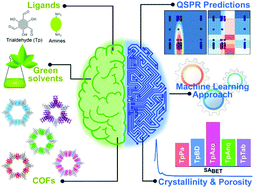
Green Chem., 2021,23, 8932-8939
https://doi.org/10.1039/D1GC02796D
Integrated mechanistic engineering models and macroeconomic input–output approach to model physical economy for evaluating the impact of transition to a circular economy
A novel method to standardize and automate material flow/waste mapping in economies by integrating mechanistic engineering models and macroeconomic framework is proposed for identifying pathways to transition towards low carbon/zero waste economy.
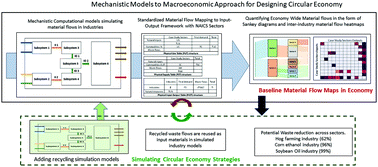
Energy Environ. Sci., 2021,14, 5017-5034
https://doi.org/10.1039/D1EE00544H
A solvent-reagent selection guide for Steglich-type esterification of carboxylic acids
A solvent-reagent selection guide for Steglich esterification has been developed. Safer, more sustainable solvent-reagent combinations were identified and optimized for this transformation effectively replacing the more harmful, toxic status quo.
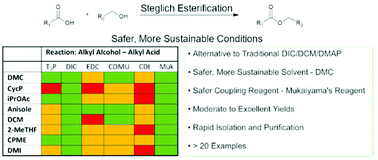
Green Chem., 2021,23, 6405-6413
https://doi.org/10.1039/D1GC02251B
Sustainable solvent selection for the manufacture of methylammonium lead triiodide (MAPbI3) perovskite solar cells
An approach for screening solvent systems for PSCs to substitute REACH restricted DMF with no loss in device performance.

Green Chem., 2021,23, 2471-2486
https://doi.org/10.1039/D1GC00079A
Predicting the density and viscosity of hydrophobic eutectic solvents: towards the development of sustainable solvents
The interest in green and sustainable solvents has been dramatically increasing in recent years because of the growing awareness of the impact of classical organic solvents on environmental pollution and human health.
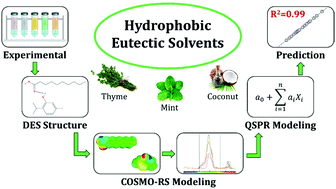
Green Chem., 2020,22, 8511-8530
https://doi.org/10.1039/D0GC03077E
Artificial intelligence: the silver bullet for sustainable materials development
Artificial intelligence in combination with design of experiments for sustainable process development achieving high quality metal–organic frameworks (MOFs) with minimal environmental effect.
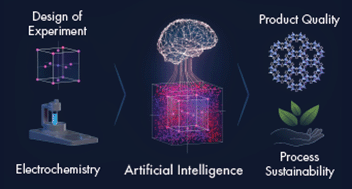
Green Chem., 2020,22, 7521-7528
https://doi.org/10.1039/D0GC02956D
Activation of homogenous polyolefin catalysis with a machine-assisted reactor laboratory-in-a-box (μAIR-LAB)
Catalysis discovery is typically limited to specialized labs – this work demonstrates an Artificially Intelligent Microreactor Lab in a Box applied to investigate the chemistry of different co-catalysts for zirconocene-catalyzed olefin polymerization.
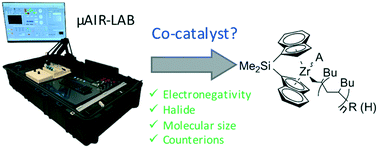
React. Chem. Eng., 2020,5, 1450-1460
https://doi.org/10.1039/D0RE00139B
Updating and further expanding GSK's solvent sustainability guide
Updated methodology and scoring of the sustainability credentials of a total of 154 solvents, including 44 new additions.
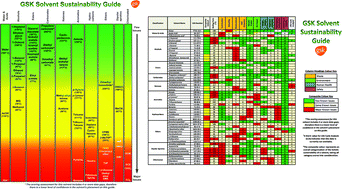
Green Chem., 2016,18, 3879-3890
https://doi.org/10.1039/C6GC00611F
CHEM21 selection guide of classical- and less classical-solvents
A methodology, based on a combination of SH&E criteria, enables a simplified greenness evaluation of any solvent, in the context of fine or pharmaceutical chemistry.
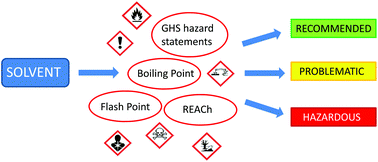
Green Chem., 2016,18, 288-296
https://doi.org/10.1039/C5GC01008J
Towards a holistic approach to metrics for the 21st century pharmaceutical industry
A unified metrics toolkit has been developed to evaluate sustainability of reactions, encompassing a comprehensive and holistic range of criteria for measuring how green a reaction is, covering quantitative and qualitative criteria both upstream and downstream of the reaction itself.
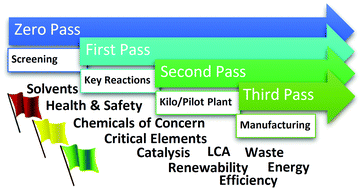
Green Chem., 2015,17, 3111-3121
https://doi.org/10.1039/C5GC00340G
A survey of solvent selection guides
The data given in the published solvent guides have been compiled. An acceptable alignment of the classifications could be met.
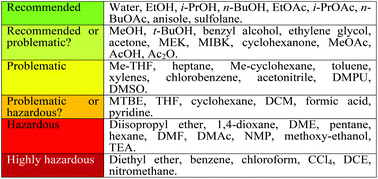
Green Chem., 2014,16, 4546-4551
https://doi.org/10.1039/C4GC01149J
About this collection
Scientists all over the globe are developing innovative technologies that will be key in achieving the UN Sustainable Development Goals. At the same time, scientific research has its own environmental impact, for example in the form of greenhouse gas emissions, plastic waste and use of water and energy.
This presents many challenges as well as opportunities for researchers, who are increasingly aware of the environmental footprint of their work. This collection of research showcases some of the innovative approaches to reduce the environmental impact of research, from solvent selection guides to machine learning approaches and more.
To accompany this collection, we are pleased to highlight RSC Sustainability as the RSC’s newest journal, welcoming solutions-focussed research related to the management of chemicals and waste, as well as the UN Sustainable Development Goals. Submissions to RSC Sustainability can be made online here.